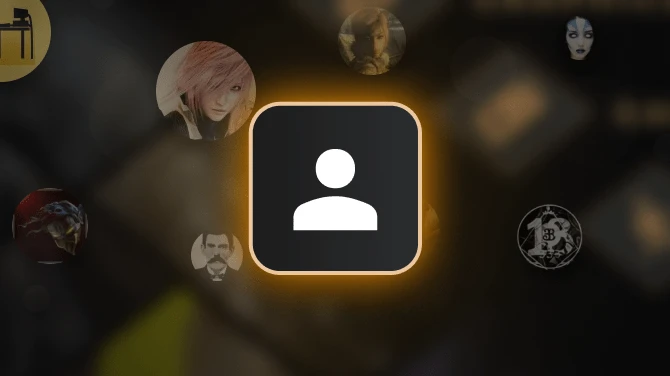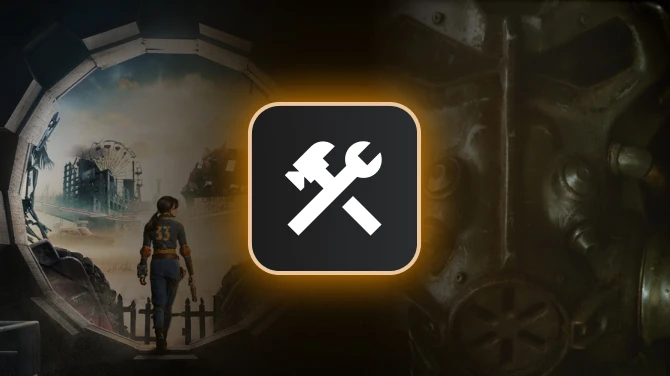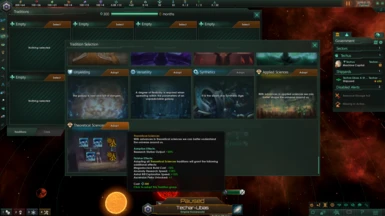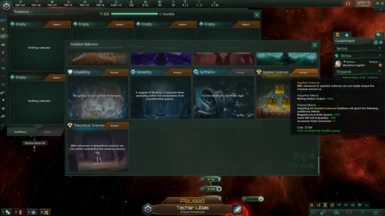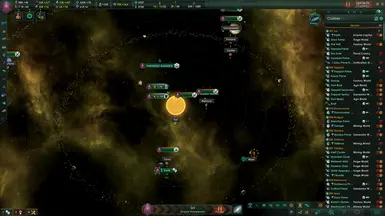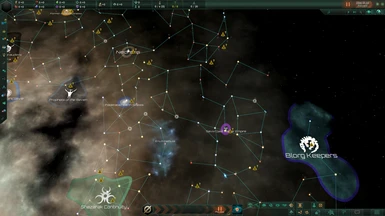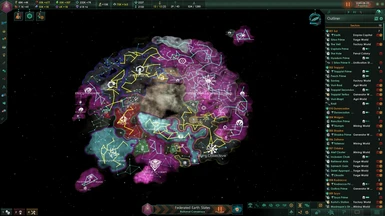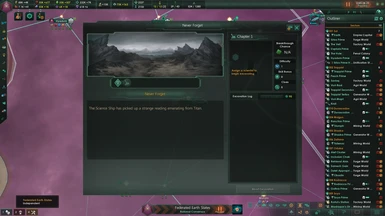About this mod
Yagisan's Better Stellaris is an AI and Gameplay overhaul. It includes non-cheating AI enhancements to space and ground combat, job placement (including mod added jobs), and an enhanced exploration focus.
- Requirements
- Permissions and credits
- Mirrors
It is NOT compatible with any other AI overhaul mods.
Compatible with Stellaris 3.11.3
Requirements
Yagisan's Better Stellaris depends on the mod, ~~Scripted Trigger Undercoat, and strongly recommends, ! The Merger of Rules to make sure it plays nicely with other mods.
If you own Stellaris on GoG like me, you will need to use Steam Workshop Downloader (GitHub Link) to download these from the Steam workshop.
Required DLC.
As the Project has grown, and begun to utilise more and more new systems, introduced with DLC, Paradox Policy requires that those feature remain behind a DLC gate. Where possible features that require DLC are gated to simply not run if you are missing that DLC.
- Distant Stars Story Pack
- Anomalies - Will disable these if not available
- Anomalies - Will disable these if not available
- Federations Expansion
- Anomalies - Will disable these if not available
- Anomalies - Will disable these if not available
- Nemesis Expansion
- AI Espionage - General
- AI Espionage - General
- First Contact Story Pack
- AI Espionage - Primitives
- Starbase Types - Cloaking
Installation
Unzip into Documents\Paradox Interactive\Stellaris\mod folder and add it to your playset in the Irony Mod Manager.
Load order is:
Scripted Trigger Undercoat
<other mods>
Yagisan's Better Stellaris
The Merger of Rules
General Overview
This is a general overview of major changes in this mod. For detailed changes, please consult the changelogs, and development diaries.
Migration
A new automatic unemployment migration system runs once a month, and can not be disabled. Provided you can pay for it, it will migrate at most 10 unemployed pops to a planet that has free jobs. It will target the most suitable job, on the most habitable planet.
Pops employed in jobs, and living on planets they have poor habitability on are covered by a variant of the unemployed migration system, I call "Greener Pastures". This new automatic greener pastures migration system runs once a month, and can not be disabled. Provided you can pay for it, it will migrate at most 3 organic pops to a planet that has free jobs. It will never migrate robots.
Jobs
The Stellaris AI appears to be somewhat lazy in making sure it's pops are in the most efficient job. To give it a helping hand we force it to re-evaluate jobs a bit more often. Once every two years or when loading a save game, we will scan for all AI empires, and flag them to be checked.
As a result pops tend to gradually end up in the most "optimal" job for them based on Stellaris or mod weightings. This does rely on Stellaris and/or the mod added job to have correctly set up their weightings.
AI Empires
Each empire will be scheduled randomly between 10 and 180 days from the event firing. Already scheduled empires will be skipped. Once it is time to check the empire, each planet will be scheduled randomly between 0 and 90 days from the event firing.
This will allow all AI empires to complete re-evaluating jobs within 270 days of the initial event, and if the Stellaris random number generator is suitably random, not at the same time, so there won't be a noticeable lag spike.
Player Empires
Player empires will be checked on the 28th day of each year. There's no delay for checking a player empire, as even in multiplayer, there's usually far less of them - and I want to minimise a confusing UI issue that occurs when moving pops around. Stellaris updates the UI instantly when firing pops. It updates at the end of the month when hiring pops.
Habitability
Habitability doesn't matter much in base Stellaris. I have tweaked it to matter much more in the early game. Habitability has been reduced on primary planets to 70%, on secondary planets to 50%, and on tertiary planets to 10%. This will all be eventually mitigated by vanilla habitability technologies.
In addition, I have reduced the habitability spawn odds down to 30% to make habitable worlds much more valuable. Finally I have adjusted moon spawning sizes to always be smaller than planets, and to have a smaller overall size. The smallest moons will be size 8, and the largest size 12, while the smallest planets are size 13, and the largest are size 25.
Finally, for the purposes of habitability, pops with a Relic world preference will consider an Ecumenopolis a primary planet, and vice versa.
Anomalies
In the base game, you eventually run out of anomalies, and your science ships become much less useful. By respawning anomalies scientists can continue to level up, and science ships can continue to be useful, throughout the game.
Respawning
Each year the game will now attempt to respawn anomalies, provided their spawn conditions are met. These can respawn anywhere in the galaxy, in both player and AI controlled space.
The respawn system will attempt to respawn all Vanilla anomalies, and if you own the respective DLC, All Distant Stars Story Pack and Federations anomalies.
Each attempt at respawning an anomaly has an 85% chance of success.
The specific spawn rates are:
- Every year, try to respawn 1 anomaly.
- Every second year, try to respawn 4 anomalies.
- Every fifth year, try to respawn 10 anomalies.
Archaeological Sites
In the base game, completed archaeological sites remain on the map. This causes accessibility issue when there are multiple archaeological sites in the same system. Now, 1 year after any site is fully excavated, the archaeological site will be removed.
In the base game, you eventually run out of archaeological sites, and your science ships become much less useful. By respawning archaeological sites scientists can continue to level up, and science ships can continue to be useful, throughout the game.
Respawning
Every 5 years the game will now attempt to respawn archaeological sites, provided their spawn conditions are met. These can respawn anywhere in the galaxy, in both player and AI controlled space.
The respawn system will attempt to respawn all archaeological sites that indicate that they can exist multiple times. This includes DLC and mod added archaeological sites.
Each attempt at respawning an archaeological sites has an 85% chance of success.
The specific spawn rate is:
- Every fifth year, try to respawn 3 archaeological sites.
Warfare
Espionage
Espionage targeting has now been completely reworked. The new targeting system for the AI is:
- It will prioritise rivals, crisis, and neighbouring empires.
- It will spy on an overlord or subject when loyalty is negative.
- It will not spy on an overlord or subject when loyalty is high.
- It will deprioritise inferior or pathetic empires, if there are better options.
- It will prevent deployment if the maximum possible infiltration level is too low.
- It will aggressively prioritise empires at war with it.
- It will aggressively prioritise empires that have terrible relations with it.
- It will not deploy an envoy if it already has one located there. (This prevents the AI from shuffling its envoys and making them useless.)
In Yagisan's Better Stellaris, I have refined targeting of operations, increased the number of available operation options, and set about weighting them from highest priority, to lowest, as follows:
- Consume Star / Crisis Beacon / Lure the Kaleidoscope
- Arm Privateers
- Imperium: Target Seditionists / Imperium: Weaken Imperial Authority / Imperium: - Spark Rebellion
- Sabotage Starbase / Acquire Asset*
- Steal Technology
- Smear Campaign
- Spark Diplomatic Incident / Extort Favors / Sleeper Cells
- Gather Information
These operations do have additional conditions involved, such as being rivals, or at war, depending on which operations being used. Acquire Asset is automatically deprioritised when infiltration is at maximum level.
War Exhaustion
Overall, War Exhaustion is an interesting mechanic. However some aspects of warfare, don't seem to impact it as much as I feel they should, and it does grow slowly, making reduction bonuses not really useful. The rate of war exhaustion grows has been buffed, with defensive armies now contributing towards it, and overall armies losses now being worth more. Planetary occupation is worth more, so now taking planets is worth it.
Space Combat
The default Stellaris space combat AI displays some "selfish" behaviours. By default it aggressively tries to conquer as many systems as it can, while neglecting defence and allies. This often results in the AI winning battles, but ultimately losing the war due to war goals.
For example, in a defensive war, the defender's allied AI is only interested in taking its claims on the attacker. Unfortunately, this causes two problems:
- Defenders and attackers enter a race to see who can take their claimed systems first. If they are different systems, the war stalemates until war exhaustion force ends the war.
- Because the defender's allied AI is only interested in its claims, it does not care about defending its ally's systems. The defender is often stuck on its own. If the claimed systems are taken, both defender and their allies lose the war.
To try and mitigate this, I have implemented a shakeup of how the AI prioritises space combat. This is fundamentally incompatible with other space combat AI mods, such as Starnet.
The new space combat AI behaviour priority is:
- Reclaim our occupied planets.
- Reclaim allies occupied planets.
- Prioritise attacks along conquered border.
- Prioritise attacks along our border.
- Prioritise attacks along allies border.
- Defend our own invaded territory.
- Defend our allies invaded territory.
- Defend our own territory.
- Defend our allies territory.
- Defend conquered territory.
- Prioritise attacks in neutral space.
When selecting targets, the new priority order is
- Enemy Fleets
- Enemy Starbases
- Systems with Planets
- All other systems.
The logic being fleets are what win wars, so they need to go first, and starbases make fleets, so they should go next.
Space Combat AI is a mixture of decision weights (I can tweak those) and hardcoded AI choices (I can't change those), and at the time of writing, I have not completely worked out the interactions between the two. I have observed that the "Defense" goal makes the AI defend, even if no attacks are incoming - which is not ideal.
Ground Combat
Ground combat in Stellaris is rather lacking by default. In theory it should be a vital part of conquest, but instead feels inconsequential. These changes seek to make ground combat a more strategic, and useful part of the game.
Generals
In vanilla Stellaris, Generals are functionally useless. Their traits are lackluster at best, and they die far too quickly, with a 5% chance per army death. To make them more useful, their experience rate gain has been buffed, and their chance of dying has been nerfed. However, their traits still remain fairly lackluster.
Gateways
Once the AI learns to build gateways, they become very indiscriminate about it. This results in both gateway spam, and lag, as the AI needs to path find though many additional gateways.
To lesson the spam, but still make gateways useful, we now limit AI gateways to 1 per sector. This limit will apply even if the gateway is disabled or ruined. If possible the AI will prefer to build the gateway over its sector capital, while respecting vanilla restriction (no gateway in an adjacent sector, starbase is the required level)
It also attempts to show gateways on the map.
Traditions
Theoretical Sciences is a tree that focuses on science and unity.
Adoption Bonus: Research Stations have 20% more output.
Finisher Bonus: Megastructure build cost is 15% cheaper. Anomaly research speed is 15% faster. Astral Rift research speed is 15% faster. You can choose an Ascension Perk.
Tradition 1: Researchers (and special versions of these) jobs have 20% more output.
Tradition 2: Unity (and special versions of these) jobs have 20% more output.
Tradition 3: Observation stations produce +3 unity, +1 physics +1 society +1 engineering research.
Tradition 4: Ships have 15% more shields.
Tradition 5: Ships have 15% more sublight speed.
Applied Sciences is a tree that focuses on industry.
Adoption Bonus: Mining Stations have 20% more output.
Finisher Bonus: Megastructure build speed is 15% faster. Astral Rift 33% less likely to fail. You can choose an Ascension Perk.
Tradition 1: Miner/Farmer/Technician (and special versions of these) jobs have 20% more output.
Tradition 2: Metallurgist/Artisan (and special versions of these) jobs have 20% more output.
Tradition 3: Refining (and special versions of these) jobs have 20% more output.
Tradition 4: Ships have 15% more hull.
Tradition 5: Ships have 15% more armour.
The Rival
On new game start (or when YBS is installed, but this is less useful), YBS will seek out a suitable empire, and designate it as your rival. It will receive several starting boosts that should enable it to become a competitive contender in game.







